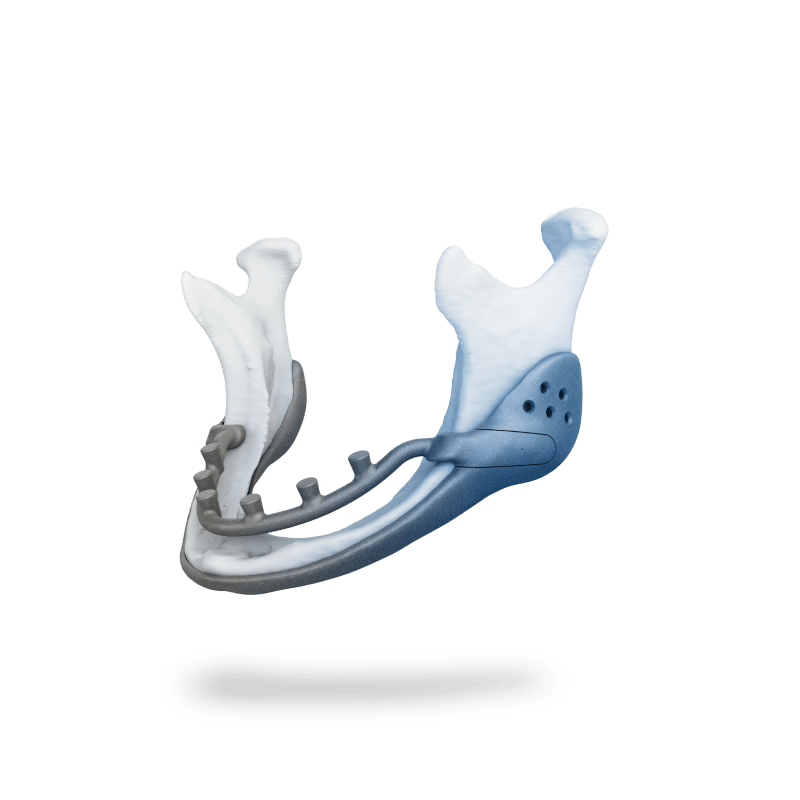Homejaw and faceSubperiosteal Implant
Subperiosteal Implant
In cases of edentulism where the patient’s bone mass has deteriorated to the extent that endosteal implants are not feasible, custom subperiosteal implants offer a suitable alternative to traditional methods. Previously, iliac grafts and bone grafting were used to create suitable bone tissue for endosteal implants, extending treatment time and incurring significant costs for the patient. With subperiosteal implants, the implant base is designed according to the patient’s bone density and the geometry of the alveolar ridge. The dental abutments are positioned based on input from the specialist surgeon and prosthodontist. A crucial aspect of designing the dental abutments is that their position and orientation are tailored to fit the dental prostheses that will be placed on them.
Mechanical analysis is critical in the design and construction of subperiosteal implants. Initially, dental prostheses are designed using specialized software under the supervision of a prosthodontist. Subsequently, the subperiosteal implant bases are designed accordingly. The orientation of these bases is optimized so that the load transferred from the dental prosthesis to the bases is axial, avoiding the introduction of bending moments to the bases.
Since these implants are placed beneath the gums and sometimes within the oral cavity, their surface quality is of utmost importance. Therefore, the surfaces of these implants are highly polished and anodized after manufacturing.



Advantages of using subperiosteal implants
No need for bone grafting surgery
Lighter and shorter surgery
Suitability for patients unable to undergo bone grafting
Better force distribution on the jawbone
portfolio
Opinions of users of this service







